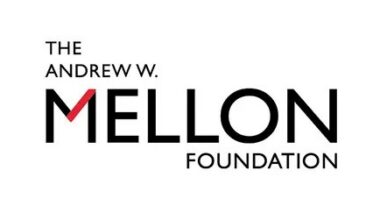Introduction
If you’ve ever dreamed of earning a fully funded master’s degree without worrying about tuition bills or living expenses, you’re not alone. Graduate school is a transformative journey—but it can also be expensive, particularly for international students. Fortunately, there is a growing number of fully funded masters programs, masters scholarships, and graduate funding opportunities that make it possible to study at world-class institutions with minimal financial burden. Whether you’re eyeing a tuition-free master’s, a high-demand STEM program, or a fully funded online master’s with monthly allowances, you have options through 2025–2027.
In this post, we’ll explore:
- What “fully funded masters” really means
- Why these opportunities exist
- Key funding sources and popular scholarships
- Top fully funded masters programs for international students 2024–2027
- High-demand STEM master’s with stipends
- Tuition-free and online master’s programs
- Application strategies and tips
- Common challenges and how to overcome them
- A comparison table of top programs
- Final thoughts and next steps
What Does “Fully Funded Masters” Mean?
Before diving into specific programs, it helps to clarify what “fully funded masters” means. Generally, a fully funded master’s covers:
- Tuition fees – either waived or paid for by the scholarship/award.
- Living stipend – money to cover accommodation, food, transport, and basic expenses.
- Additional costs – sometimes includes health insurance, research or conference allowance, travel, visa support.
When people say “graduate funding” or refer to masters scholarships, they often mean packages that cover all or most of these costs.
Why Fully Funded Masters Programs Exist
You might wonder: why would universities or governments pay for master’s students? Here are some of the main motivations:
- Talent recruitment: Institutions want to attract top students globally, especially in research-intensive fields.
- Soft power and diplomacy: Scholarships strengthen international ties (e.g., Chevening from the UK, Fulbright from the USA).
- Research output: Graduate students contribute significantly to research. Funding them is an investment.
- Diversity and equity: Scholarships expand access to students from underrepresented or low-income backgrounds.
- Global challenges: Many scholarships aim to develop leaders who can tackle global issues like climate change, public health, and inequality.
Key Funding Sources & Popular Master’s Scholarships
Here are several well-known scholarship sources and programs that support fully funded masters:
- DAAD (Germany): The German Academic Exchange Service offers fully funded master’s scholarships (e.g., EPOS) that cover tuition, monthly stipend, travel, and health insurance. (Scholarship Region)
- Erasmus Mundus Joint Master Degrees: These European programs provide full tuition, a monthly stipend (often €1,000–€1,500), travel, and insurance. (FullyFundedScholarship.org)
- Stanford Knight-Hennessy Scholars: This prestigious U.S.-based fellowship supports graduate students (including master’s) with full tuition, a living stipend, and travel allowances. (Scholarships 2025–2026)
- Fulbright Foreign Student Program: A flagship U.S. government scholarship covering full tuition, stipend, health insurance, and more. (scholarshipswebsite.com)
- Gates Cambridge Scholarship: Offers fully funded graduate study at the University of Cambridge, covering tuition and other expenses. (Wikipedia)
Top Fully Funded Masters Programs for International Students (2025–2027)
Here, we’ll highlight some standout programs that align with the keyword fully funded masters programs for international students 2024–2027.
1. Erasmus Mundus Joint Master Degrees
- These are collaborative master’s programs offered by European universities.
- Funding includes: tuition waiver, monthly stipend, travel and insurance. (FullyFundedScholarship.org)
- Benefits: You may study in multiple countries, gain cross-cultural experience, and earn a highly respected degree.
2. DAAD Master Scholarships (Germany)
- Through DAAD’s EPOS program, international students from developing countries can pursue master’s degrees in Germany. (Scholarship Region)
- Coverage: Tuition, monthly stipend, health insurance, and often travel. (Scholarship Region)
- Advantage: Germany is known for high-quality education and many public universities do not charge tuition.
3. Stanford Knight-Hennessy Scholars
- Provides full funding for master’s students at Stanford. (Scholarships 2025–2026)
- Components: full tuition, living stipend, academic development funds, and more.
- Ideal for: students with leadership potential and strong academic profiles.
4. Fulbright Foreign Student Program
- One of the most recognized U.S.-based scholarships. (scholarshipswebsite.com)
- Covers: tuition, monthly stipend, health insurance, round-trip travel, visa support.
- Encourages: cross-cultural exchange, leadership, and academic excellence.
5. Gates Cambridge Scholarship
- Targets international students applying to Cambridge University. (Wikipedia)
- Covers: full tuition, maintenance allowance, travel, and other costs.
- Highly competitive: but transformative for those selected.
6. University of London Distance Learning Scholarships
- Fully funded online master’s scholarships via the University of London. (Scholarship Region)
- Specific scholarship: the Commonwealth Distance Learning Scholarship covers full fees for online master’s programs. (Scholarship Region)
- Benefit: Flexibility to study remotely while possibly working.
7. Edinburgh Global Online Learning Scholarships
- The University of Edinburgh offers full tuition scholarships for eligible online master’s students. (Diwig)
- Suitable for global students who need flexibility and cost-effectiveness.
High-Demand Fully Funded STEM Masters Programs with Stipends
STEM fields (Science, Technology, Engineering, Mathematics) are often at the center of fully funded masters opportunities, due to global demand and the research value they bring. Here are some key funding paths:
- NSF Graduate Research Fellowship Program (USA): This is not a university-specific scholarship but a fellowship that provides funding for masters and PhD students in research-based STEM disciplines. (Wikipedia)
- Offers an annual stipend of US$37,000 for up to 3 years plus cost-of-education, totaling roughly US$159,000. (Wikipedia)
- Open to students enrolled in U.S. research universities.
- DAAD STEM Masters: Many DAAD master scholarships in Germany specifically welcome STEM students, providing a solid monthly stipend and fee waiver. (Scholarship Region)
Fully Funded Online Masters Programs with Monthly Allowances
The rise of distance learning has opened the door for more fully funded online master’s programs with monthly funding. Here are notable examples:
- University of London Commonwealth Scholarship (Online)
- Fully covers tuition for students from Commonwealth countries for certain master’s programs. (Scholarship Region)
- It’s a tuition-free master’s when awarded.
- DAAD Helmut-Schmidt Programme (Hybrid/Online)
- Some DAAD master’s programs now offer a remote or hybrid mode, making them accessible globally. (Diwig)
- Includes stipend and health insurance.
Best Tuition-Free Masters Programs in the USA for Global Students
When considering best tuition-free masters programs in the USA for global students, here are a few top-tier options:
- Stanford Knight-Hennessy Scholars (already covered).
- Fulbright Foreign Student Program: effectively makes grad school in the U.S. tuition-free plus a living stipend. (scholarshipswebsite.com)
- Some U.S. universities offer assistantships (teaching or research) to graduate students, which often cover tuition and provide a stipend—but these vary by department and institution (and are not tied to one single centralized scholarship).
Application Strategies and Tips for Fully Funded Masters (Fully Explained)
Getting into a fully funded master’s program is highly competitive—not because you’re not good enough, but because thousands of brilliant students from around the world apply for the same limited number of funded spots. To stand out, you need more than good grades. You need strategy, preparation, and a clear personal story.
1. Start Early (6–18 Months Before Deadline)
Fully funded programs often have early deadlines, sometimes a full year before the academic session begins. Starting early gives you time to:
- Gather quality recommendation letters
- Craft a strong Statement of Purpose (SOP)
- Prepare for language tests (IELTS/TOEFL) if required
- Improve your CV with relevant activities
- Research programs deeply so your application appears intentional, not rushed
Why it matters:
Early applicants tend to submit stronger, more polished materials. Procrastination is one of the biggest reasons students miss out.
2. Tailor Every Application to Each Program
Avoid generic applications. Universities and scholarship boards want to see that you understand:
- Their mission
- Their program strengths
- How their curriculum aligns with your goals
- Why you are a perfect fit for them specifically
How to tailor effectively:
- Mention specific courses and professors
- Explain how the program supports your career ambitions
- Highlight research interests that match theirs
- Use keywords from the program’s website in your SOP
Well-tailored applications show maturity, clarity, and genuine interest.
3. Showcase Leadership and Impact—Not Just Grades
Fully funded programs love applicants who:
- Show initiative
- Lead projects
- Solve community problems
- Demonstrate global or social consciousness
Leadership doesn’t mean being a president of a big club. It includes:
- Starting a small community project
- Organizing a workshop
- Leading a team at work
- Mentoring someone
- Running a small business
- Conducting impactful research
Scholarship committees want changemakers, not just book-smart students.
4. Secure Strong Recommendation Letters
Your recommenders should:
- Know you well
- Speak confidently about your strengths
- Provide specific examples of your academic or professional excellence
- Highlight traits such as leadership, creativity, work ethic, or resilience
Tip:
Provide your recommenders with:
- Your CV
- A draft of your SOP
- The scholarship/program details
- Specific points you’d like them to emphasize
This ensures their letters are aligned with your application goals.
5. Craft a Powerful Statement of Purpose (SOP)
Your SOP is often the most important part of the application. It should:
- Tell your story clearly and emotionally
- Explain your academic journey
- Highlight your motivations
- Connect your past to your future goals
- Show why you need the funding
- Reflect maturity, clarity, and ambition
A winning SOP is:
- Personal
- Specific
- Honest
- Insightful
- Future-driven
Avoid clichés like “I have a passion for…” unless supported with real examples.
6. Build a Strong Academic or Professional Profile
Fully funded programs want applicants who can excel. Strengthen your profile through:
- Good academic grades
- Research experience
- Internships
- Professional achievements
- Certifications or short courses
- Volunteering
If your GPA is not high, compensate with:
- Strong professional experience
- Publications
- Certifications
- A compelling SOP
Scholarships consider your entire story, not just grades.
7. Prepare for Required Tests (Where Applicable)
Some programs require:
- GRE
- GMAT
- TOEFL
- IELTS
High scores improve your competitiveness, especially for science or business programs.
Strategy:
Start practice early using free online resources.
8. Apply to Multiple Scholarships (Don’t Limit Yourself)
Even top students face rejection, so diversify your applications:
- Apply to 5–10 programs if possible
- Target various countries and funding bodies
- Include both prestige scholarships and mid-tier ones
The more quality applications you submit, the higher your success probability.
9. Network with Alumni and Current Scholars
This is one of the most underrated strategies.
Reach out to alumni on:
- Facebook scholarship groups
- University forums
- Webinars
Ask them:
- What made their application successful
- What mistakes they avoided
- How to tailor your application to the program’s culture
Their insights can help you refine your SOP and strategy.
10. Pay Close Attention to Details
Small mistakes can get your application rejected:
- Wrong file format
- Missing documents
- Incorrect naming format
- Late submission
- Weak email etiquette
Double-check everything before submission.
11. Present a Clear Career Vision
Scholarships want to invest in people who have direction. Your career plan should explain:
- What you want to do after graduation
- How the master’s program will contribute to your goals
- How you plan to use your skills to make an impact
- How your work aligns with the scholarship’s mission
A clear plan = higher chances.
12. Show Genuine Financial Need (where required)
Some scholarships prioritize students who:
- Cannot afford graduate school
- Come from low-income backgrounds
- Have limited opportunities in their home country
Be honest but not dramatic—explain your situation respectfully and maturely.
13. Highlight International Mindset and Cultural Adaptability
Fully funded programs expect students to fit well in a diverse environment. Demonstrate:
- Openness to new cultures
- Past international experiences (even virtual ones)
- Teamwork and communication skills
- Community engagement
This shows you’re ready for global leadership.
14. Prepare for Scholarship Interviews
Many fully funded scholarships include interviews. Prepare by:
- Practicing common scholarship questions
- Rehearsing your story
- Showing confidence and clarity
- Demonstrating emotional intelligence
- Knowing the program’s mission
Interviews are not just about answers—they assess personality and potential.
15. Stay Consistent, Organized, and Persistent
Finally:
- Track deadlines
- Keep copies of all documents
- Create a calendar
- Don’t get discouraged by rejections
Most scholarship winners apply multiple times before success.
Persistence wins.
Common Challenges & How to Overcome Them
While fully funded masters opportunities are attractive, they come with challenges:
- High competition: Because they are cost-free, many applicants apply.
Solution: Make your application stand out through research, leadership, and clarity of purpose. - Visa & immigration hurdles: Even with funding, visa processes can be stressful.
Solution: Start visa applications early. Use the scholarship’s offered support for visa guidance. - Relocation & cultural adjustment: Moving countries for a master’s can be emotionally and financially taxing.
Solution: Research and budget for hidden costs; connect with student communities for support. - Work restrictions: In some countries, international students may be limited in the number of hours they can work.
Solution: Use your stipend wisely. Explore on-campus opportunities (assistantships, research) rather than relying solely on external work.
Comparison Table: Top Fully Funded Masters Options (2024–2027)
Here’s a comparison of some of the major fully funded masters programs, to help you weigh your options:
| Scholarship / Program | Region / Country | Coverage | Ideal For | Mode (In-person/Online) |
|---|---|---|---|---|
| Erasmus Mundus Joint Master Degrees | Europe (EU) | Tuition + monthly stipend + travel + insurance (FullyFundedScholarship.org) | Students wanting cross-country study & European experience | In-person (multi-country) |
| DAAD Master Scholarships (EPOS) | Germany | Tuition, monthly stipend, health insurance, travel (Scholarship Region) | Students from developing countries, strongly academic | In-person (Germany) |
| Stanford Knight-Hennessy Scholars | USA | Full tuition, stipend, travel, academic funds (Scholarships 2025–2026) | Leadership-driven students, any discipline | In-person (Stanford) |
| Fulbright Foreign Student Program | USA | Tuition, living stipend, insurance, travel (scholarshipswebsite.com) | International students committed to cultural exchange | In-person (U.S.) |
| Gates Cambridge Scholarship | UK (Cambridge) | Tuition, maintenance, travel, other costs (Wikipedia) | Scholars with academic excellence & leadership | In-person (Cambridge) |
| University of London Commonwealth Distance Learning Scholarship | UK (Online) | Full fees for certain master’s programs (Scholarship Region) | Students requiring remote learning and flexibility | Fully online |
| Edinburgh Global Online Learning Scholarships | UK (Online) | Full tuition waiver for eligible online master’s (Diwig) | Remote students seeking a top UK institution | Fully online |
| NSF Graduate Research Fellowship (GRFP) | USA | Stipend (~US$37,000/year) + cost-of-education US$16,000, for up to 3 years (Wikipedia) | Research-focused STEM graduate students | In-person (various U.S. universities) |
Final Thoughts & Next Steps
Pursuing a fully funded master’s can feel like chasing a dream, but with careful planning and a strong application, it’s absolutely achievable. Here are the next steps you should take if you’re serious about making this a reality:
- Shortlist your goals: Which country, mode (online vs in-person), and field of study do you prefer?
- Research scholarship deadlines: Scholarships like Erasmus Mundus, DAAD, Fulbright, and Knight-Hennessy have different application windows, and missing them could cost you a year.
- Prepare your application materials: Start writing your SOP, gathering academic transcripts, preparing your CV, and asking for recommendation letters.
- Reach out for support: Contact university admissions teams, current students, or alumni of the scholarships to understand their experiences.
- Apply broadly: Even if a fully funded scholarship is your dream, apply to multiple programs to diversify your chances.






